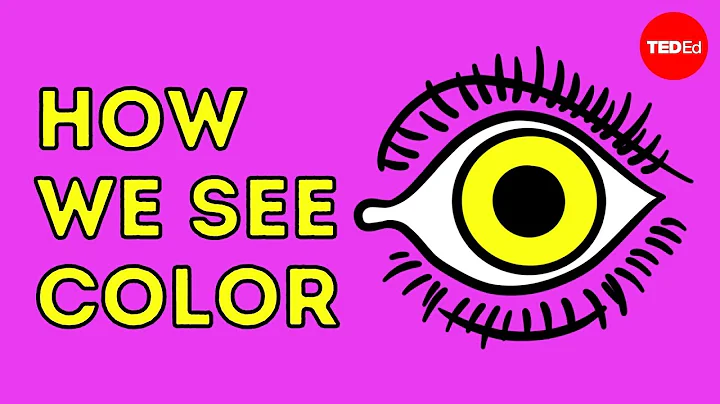color photos show us a colorful world, and rich colors inspire people's emotions. For example, bright red makes people feel passionate, blue makes people feel romantic, black makes people solemn, and white makes people feel pure. Different color combinations bring different feelings to people.
Color photos have a history of 162 years. Do you know how the world's earliest color photos were invented? Today we will talk about interesting things about the origin and development of color photos.
The world's first color photo was taken by Maxwell in England in 1860.
But his photos are not real photos, but negatives projected onto a screen. He shot three black and white negatives using the three primary colors (red, green and blue), and then projected them on the screen through filters of corresponding colors. The world's first color photo was born on the screen.
The color image produced by this overlapping projection method is called color additive method. It marked the beginning of photography's transition from black and white to color.

In 1869, the French scientist Dick Aulon used three primary colors (red, green and blue) pigments and mixed them in different proportions to create color photos.
In 1873, Professor Volker of the Technical University of Berlin, Germany, could feel green light after immersing the collodion photosensitive plate in benzene solution. The publication of this experiment encouraged scientists to look for photosensitive additives of other colors.
In 1881, photographic film could already sense red, orange, yellow, green, blue, purple and other colors.
In 1891, French physicist Lipps used scientific methods to create a color photographic plate. This was the first color photography method and he won the Nobel Prize in 1908.
This method is to add a layer of reflective mercury to a full-color photosensitive emulsion, so that the light and shadow are reflected back through the photosensitive emulsion, and at the same time form a latent image with the incident light and shadow, so that bright colors can be seen when viewing.
Because the color negative film produced by this method is very complicated and requires a long exposure time, and more importantly, it cannot be printed repeatedly, so it cannot be popularized.
It was not until 1904 that the French Lumière brothers, the "fathers of film", evenly applied potato starch dyed with the three primary colors on a glass dry plate to realize color positive photosensitization, and then invented true color negative film. This color dry plate photography technology is called Lumière color dry plate, also called Ottochrom particle color screen dry plate. This method is easy to use, but still requires long exposure times and is expensive.
This color negative film has attracted many amateur photographers with money and free time, as well as some photographers who shoot flowers and nature. In the trend of history and in response to people's needs, color photography was finally born.

It was not until 1935, when Kodak invented color film Kodachrome, that the technology gradually exited the market.
In 1975, Kodak engineer Cezanne developed the world's first digital camera. People could see electronic photos directly from the computer. Film-printed photos have since been replaced by digital photos.
However, China’s earliest color photos were taken by Stephen Passer in 1912, ushering China into the color era.
This originated from 1909 to 1931, when French banker Albert Kane wanted to use color dry plate technology to implement the "Earth Archives" project to record the world with images.
The photographer Stephen Passer who led the team at that time came to China twice between May and August 1912 and May and June 1913, leading his photography team to visit Beijing, Shenyang, Zhangjiakou , and Qufu. , Tai'an , Shanghai and other places, a large number of image materials were taken, preserving for us colorful images of China more than a hundred years ago.

These photos that shock the soul and astonish the senses give us a deeper understanding of China in the late Qing Dynasty and the early Republic of China.
With the collapse of Kodak, the era of submission ended and the digital era began. Although film photos are more beautiful, textured and more immersive, they cannot be replaced by digital.
However, compared with film, digital is cheaper, lower cost, lightweight, pollution-free, can be stored permanently, and is easy to find
.
digital has a large and powerful range of intelligent photo editing. You can try multiple angles and compositions before shooting, and it can also present high-definition images, giving people a clearer visual impact.
What new developments will there be in digital photos in the future? We'll see.












![✨The Emperor's Strategy EP 01 - EP 20 Full Version [MULTI SUB] - DayDayNews](https://i.ytimg.com/vi/whEoPpYRUYE/hq720.jpg?sqp=-oaymwEcCNAFEJQDSFXyq4qpAw4IARUAAIhCGAFwAcABBg==&rs=AOn4CLCWC5PUx2tvHOOToGCaqvKYvbeNlQ)

![✨Tales of Demons and Gods EP 01 - EP 123 Full Version [MULTI SUB] - DayDayNews](https://i.ytimg.com/vi/GsjaaYb8-PA/hq720.jpg?sqp=-oaymwEcCNAFEJQDSFXyq4qpAw4IARUAAIhCGAFwAcABBg==&rs=AOn4CLC7CWXf9KmbWVf1h_85eEEHGDLWRA)






